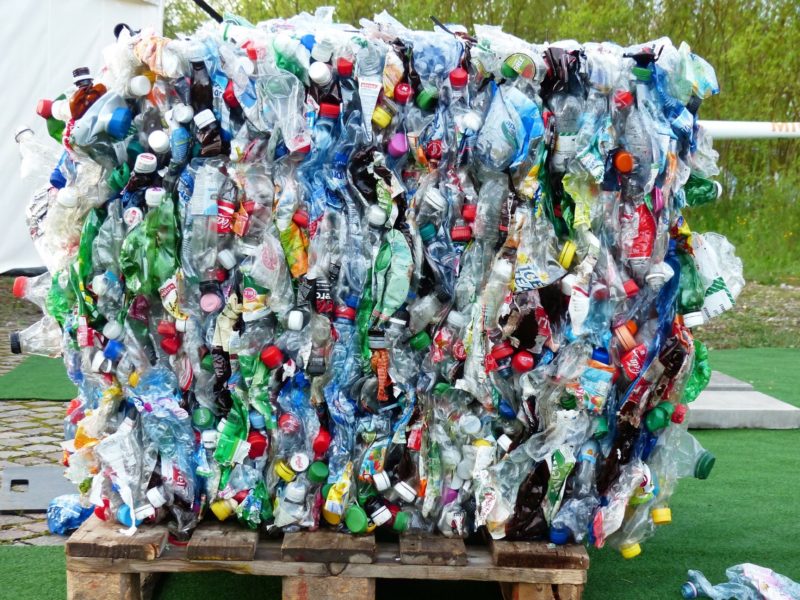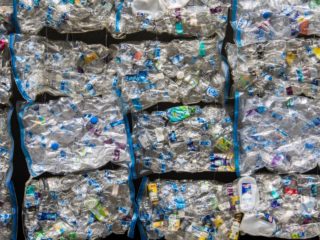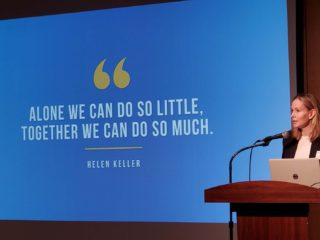So you’ve just diligently tossed your plastic soda bottle in the recycling bin. Do you know where it ends up? Where does your recycling go?
Let’s back up for a bit, because you might be wondering: why should it matter that I know? Surprisingly, it matters a lot. In fact, our lack of understanding about the entire process significantly impedes proper and effective recycling.
While the main goal should always be to reduce purchases and reuse what we have, recycling is an essential method for curbing our growing waste crisis. But the entire system needs to function properly and its successful implementation depends on you! So let’s take a look at that process.
(Curbside) Collection
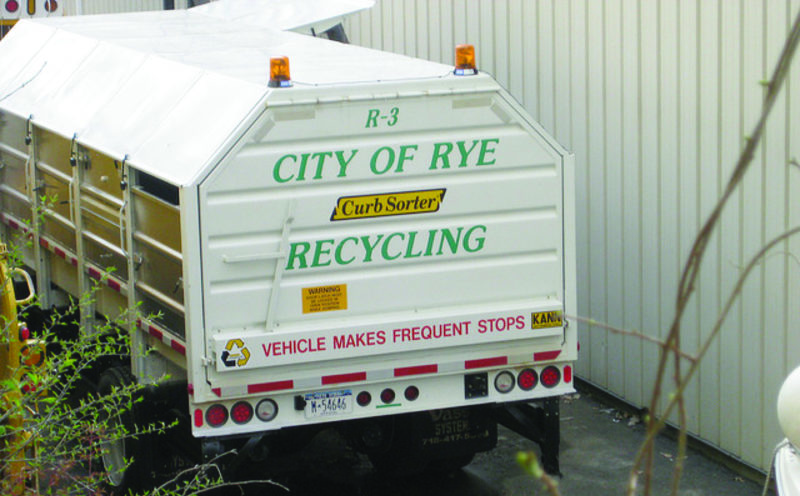
Most communities offer its residents curbside collection of plastics, metals, glass, and paper.
Dual-stream Recycling
Recyclables are separated into different bins for pickup, typically one bin for commingled materials (containers, bottles, cans), and a second for mixed paper (cardboard, paper).
Single-stream Recycling
Instead of sorting waste into separate bins, all recyclables are collected in one bin.
Food Scrap Recycling
Some communities, like mine, offer a food scrap recycling service. If available, residents separate food waste from their garbage for recycling. The scraps are either collected curbside, or residents can drop-off at a food scrap recycling location.
Separation of Contaminants (Part 1)
After you leave your bin at the curb it’s picked up by your local hauler. The crew will eyeball your bin for any contaminants, before transportation to the transfer station.
At the transfer station, everything is checked for contaminants. If items are non-recyclable, soiled, or soggy, the entire load can be rejected and sent to the landfill or incinerator.
This happened recently in connection with my community’s food scrap recycling program. Someone threw a cell phone case in with their food scraps and it ended up contaminating our town’s entire (one ton!) collection for that week. Unfortunately, everything had to be sent to the dump instead of being turned into valuable compost.
Where Does Your Recycling Go? The MRF!
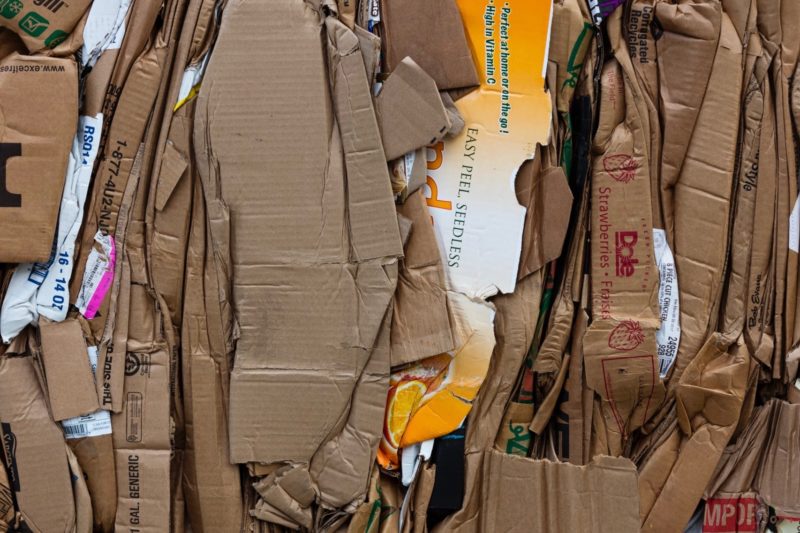
What the heck is a MRF? Affectionately pronounced “murf,” MRF stands for Materials Recovery Facility. This facility’s purpose is to separate, sort, and package materials for sale.
MRF Operations
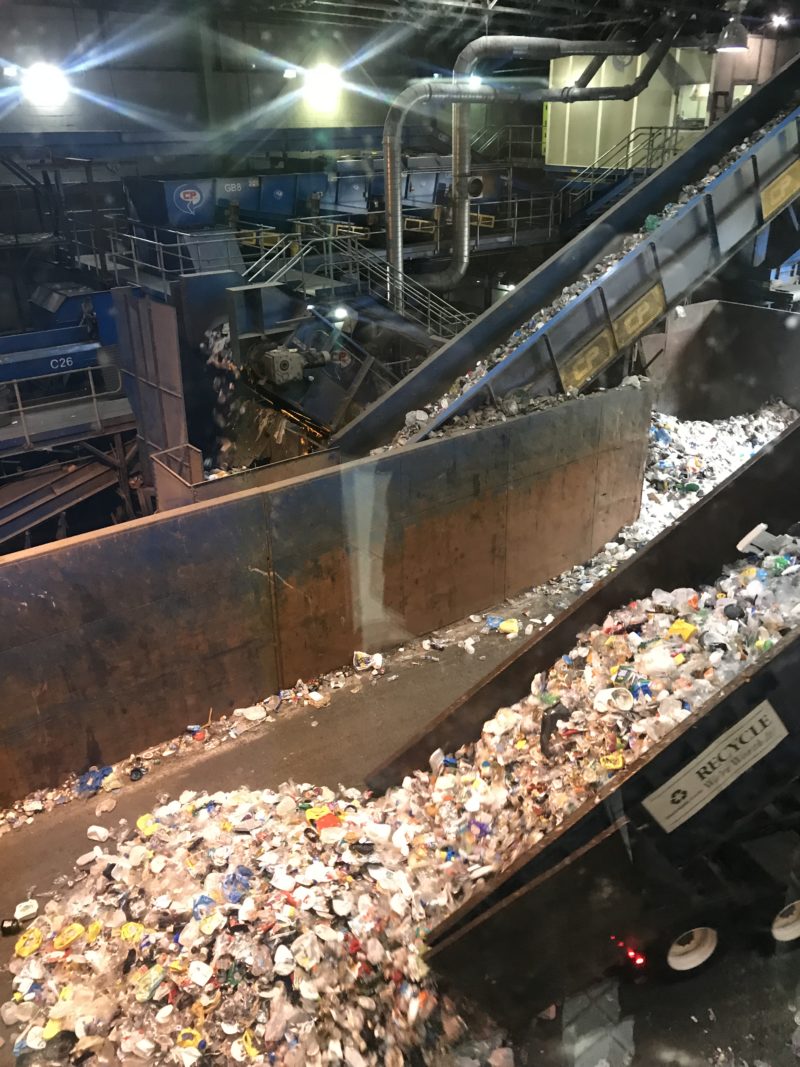
When it comes to MRFs, one size does not fit all. Some are large operations with expensive, sophisticated technology that detects and separates a wide variety of materials. Some, known as “dirty” MRFs, accept unsorted trash and recyclables. Others are less complex and don’t have the capability to separate assorted items, particularly different types of plastics.
In general, however, MRFs follow the same process: the plant receives the mixed waste, which is dumped on a conveyor belt where magnets and cameras sort material based on size, weight, electromagnetic properties, and other features.
After everything’s sorted, the piles of materials are (literally) mushed into enormous one-ton packages, called bales, ready for sale.
Separation of Contaminants (Part 2)
Again, anything that’s contaminated or not recyclable is rejected and sent to the landfill. Worse, these items can potentially jam or break machinery, causing downtime and unnecessary expense. Contamination rates at MRFs vary, but can run as high as 25% of total recyclables.
Selling Recyclable Materials
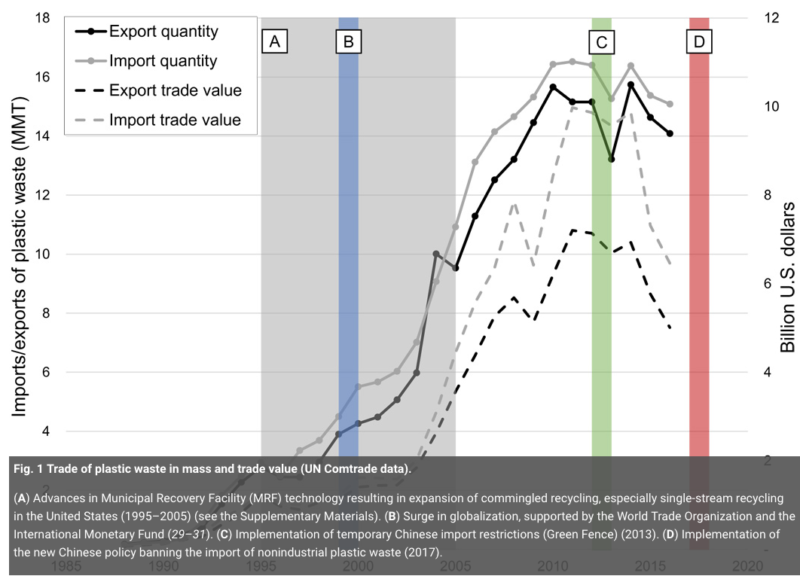
Recycling is a business, and once the various recyclables are sorted and baled, they’re sold as commodities. Just like any commodity, prices for these materials fluctuate.
China’s National Sword Policy and Plummeting Prices
Right now, the markets for certain plastics and papers have plummeted because of purity standards set by China’s National Sword Policy.
At its height, plastics were selling for around $300/ton. Now one ton is virtually worthless. As China’s largest customer of these products, the U.S. recycling industry is suffering.
Where Does Your Recycling Go? National Sword Policy’s Fallout
With mountains of unwanted scrap piling up, what does this mean for you and me? Where does your recycling go these days?
Local governments have responded in different ways: sending recyclables to the landfill, refusing to accept certain categories of recyclables, imposing contamination fines on residents, or stopping curbside recycling completely. In today’s market, answering the question, “where does your recycling go?” can be: “to the dump.”
Personally, I think this is an opportunity to emphasize the “Reduce” in Reduce, Reuse, Recycle. The more we reduce our consumption of disposable products, particularly plastic products, the less we’ll need to recycle, or even worry about what or how to recycle.
The End Products!
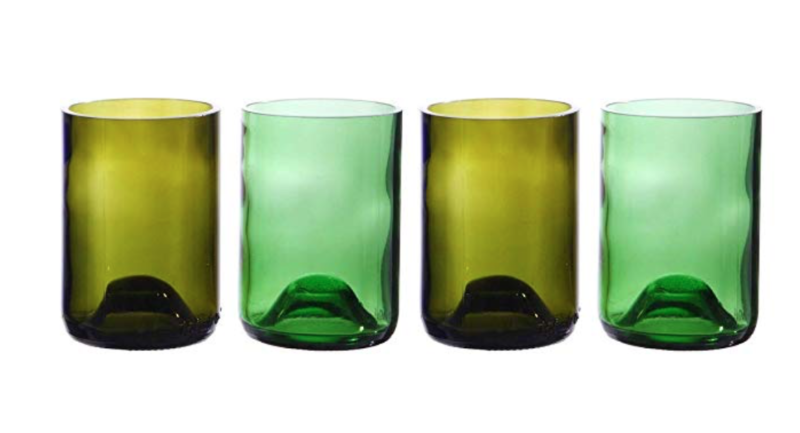
Assuming all goes well and the bales find a buyer, they’re turned into usable products, from recycled office paper and paper bags, to soda cans and plastic bottles. These beautiful Oenohilia tumblers, pictured above, are made from recycled wine bottle bases.
Why Buy Recycled Products?
The good news is that despite the precarious journey recyclables take from your curbside bin to the manufacturing plant, these products have a lower carbon footprint than the same products made from virgin materials. One ton of recycled plastic, for instance, saves around 16 barrels of oil. And one ton of recycled aluminum saves about 40 barrels of oil!
Reduce and Reuse, First and Foremost
Again, reducing your purchases and reusing what you have are always better options, but when items are no longer usable, recycling is the way to go. Just remember to Recycle Right! For more information on what and how to recycle, visit Green That Life’s Recycling Resources page.

